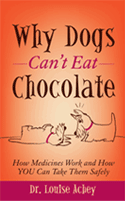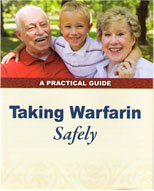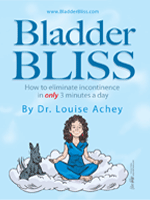A New Use For Puppy Litter
Tags: medicine disposal, National Prescription Drug Take-Back Day, pain patch, unwanted medicines
Q: What’s the best way to dispose of my old medicines? My neighbor says to just flush them down the toilet but if I do that, won’t they end up in the water supply?
– Afraid to Flush
Given enough time, pills get crumbly and liquids and capsules lose their potency. It’s a good idea to sort through your medicine cabinet and remove any unused or expired prescriptions. Family members and intruders will often check your bathroom medicine cabinets, looking for medicines they can use or sell. The best way to remove medicines from your home AND protect the environment is to take them to a take-back event or medication disposal site in your community. If you can’t find one nearby, you can also dispose of them at home with just a couple of extra steps before you put them in the trash.
There’s a big take-back event coming up soon: the 8th National Prescription Drug Take-Back Day will be taking place in communities across the nation on Saturday, April 26, 2014 from 10 am to 2 pm. It’s a partnership between the federal Drug Enforcement Administration (DEA) and local law enforcement agencies with participating sites all across the country willing to accept your medicines for disposal, with no fees or questions asked.
The DEA launched its first Take-Back event in September 2010 for two main reasons: to give Americans a more environmentally responsible way to dispose of their old medicines than flushing them down the toilet into the water supply, and to provide a more secure way to discard prescription drugs besides just pitching them into the trash.
The last National Prescription Drug Take-Back event in October 2013 collected 647,211 pounds (324 tons) of expired and unwanted medications at 5,683 take-back sites for disposal. In Washington State alone, people turned in 14,508 lb of prescriptions at 86 sites. When added together, the past seven National Prescription Drug Take-Back events have removed over 3.4 million pounds (1,733 tons) of unwanted medicines from medicine cabinets, bedside tables and kitchen drawers.
Prescription drug take-back events are so popular that some communities host local events several times during the year. Some pharmacies also offer year-round disposal of expired or outdated prescriptions.
Potent pain medicines like hydrocodone, oxycodone, OxyContin®, methadone, and fentanyl (Duragesic®) pain patches are a special concern. They should NEVER, ever be placed in your trash. In fact, the Federal Drug Administration advises that if you cannot find a take-back or secure disposal site in your community, you should remove these potent pills and patches from their original containers and then flush them down the toilet. Please be careful when disposing of them. Because they’re so potent, just one dose, one pill or even just sucking on a pain patch can be deadly to a pet or small child.
Here’s How to Safely Dispose of Your Unwanted or Expired Medicine:
1. Take Your Expired or Unwanted Medicines to a Take-Back Event or Location.
Take your old medicines to collection site in your community during a prescription drug take-back day, such as the upcoming 8th National Prescription Drug Take-Back Day on Saturday, April 26 from 10 am to 2 pm. To find out where the nearest participating location is, go to http://www.deadiversion.usdoj.gov/drug_disposal/takeback. You can also call 1-800-882-9539. As an alternative, check with your local community pharmacy for other drug disposal sites and services.
2. Go Ahead and Flush the Dangerous Ones.
Although the FDA recommends that most prescription medicines should NOT be flushed down the toilet, they make an exception for potent pain medicines like hydrocodone, oxycodone, hydromorphone and fentanyl. First, remove them from their original containers and then flush them down the toilet. After peeling off a pain patch, carefully close it up by folding the sticky sides together to prevent a child or animal from danger should they touch it or put it in their mouth.
3. If You Must Put Them in the Trash, Do This FIRST:
Open your prescription bottles and dump out the pills, mixing them in with kitty litter or used coffee grounds in a container with a secure lid before placing them in your trash. At my house we call it “puppy litter” because our puppy Clancy uses a litter box.
4. Protect Your Personal Information.
To protect your privacy, use a black marker such as a Sharpie® to mark out any identifying information such as your name, prescription number and the drug name before putting your empty used prescription bottles into the trash.



